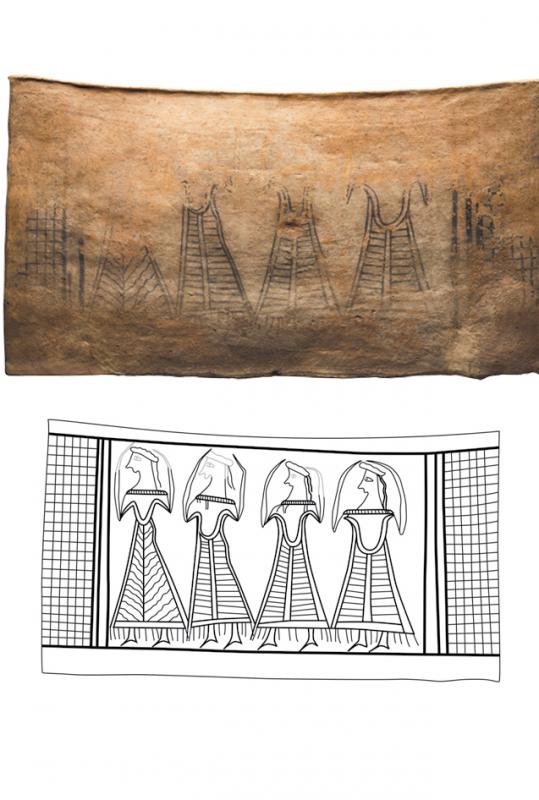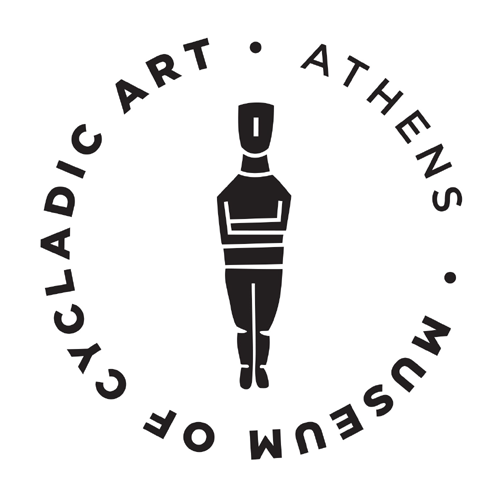
Part of a Mycenaean larnax
Part of a Mycenaean larnax
Larnakes were four-sided clay coffins set on legs and covered by a lid. The sides bore figured decoration, usually depicting processions of mourners and, less frequently, scenes of burial, marching warriors, priests, mythical creatures, etc. Similar clay larnakes have been excavated at the Mycenaean cemeteries of Tanagra in Boeotia. This piece most probably comes from the same site, since the custom of larnax-burial was otherwise unknown on the Greek mainland. By contrast, in Crete it was common practice already from the Middle Minoan period (ca. 2000-1600 BC). The depictions on the Tanagra larnakes are a treasure trove for the study of Mycenaean mortuary customs. This one preserves traces of a procession of mourners rendered in outline (see restoration drawing by N. Sepetzoglou, which is based on an ultraviolet photograph of the fragment as well as on corresponding Boeotian examples). The women wear the typical Mycenaean garment and headdress. All figures have the hands raised above the head in a gesture of lamentation that is also encountered on Attic funerary vases of the Geometric period and in later representations. In iconography, the lament is associated with the prothesis (the lying in state of the dead), which precedes the ekphora (the bearing of the corpse to the grave).





